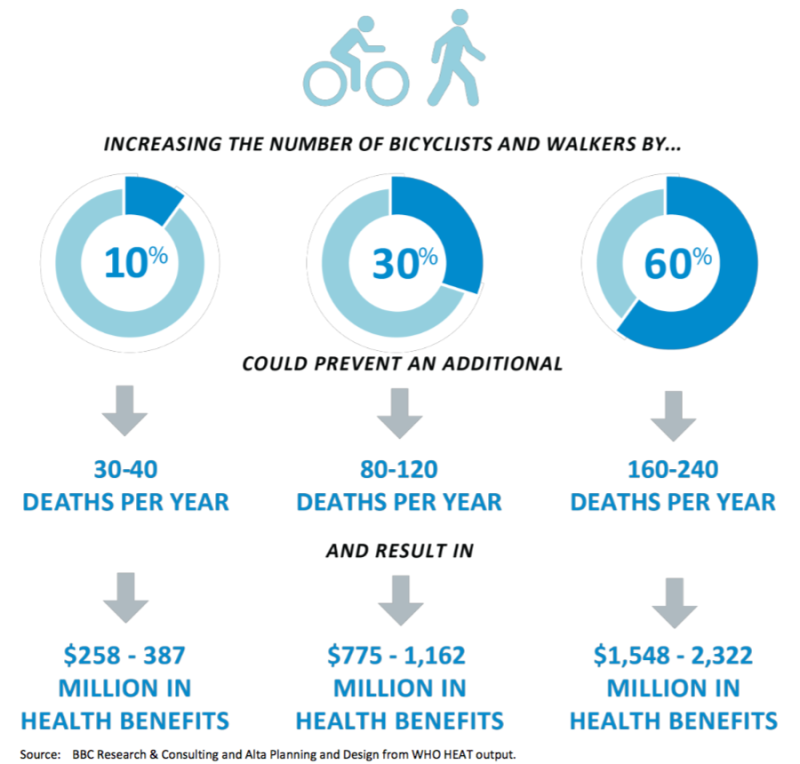How Big Investments in Walking and Biking Could Pay for Themselves

The potential benefits of walking and biking in Colorado are immense, but the lack of safe infrastructure is holding us back, according to a new study prepared for the Colorado Office of Economic Development and Trade [PDF].
BBC Research and Consulting found that the statewide economic benefits of walking and biking total $1.6 billion annually, a figure that includes all activity linked to the manufacture and sale of equipment like bikes or boots, as well as tourism and events related to biking and walking.
The health impact is larger. Using research tools from the World Health Organization, BBC concluded that the health benefits of biking and walking, in terms of years of life saved thanks to physical activity, are worth $3.2 billion annually.
There is room for these benefits to grow substantially if Coloradans walk and bike more. A 60 percent increase in walking and biking could prevent as many as 240 premature deaths each year, the report found.
“If you assume, as we do, that accessibility to bicycling and walking is one of the key mechanisms for getting people out to walk or ride, it would stand to reason that participation rates would increase with more infrastructure — especially infrastructure like protected bike lanes and detached sidewalks that offer improved bicyclist and pedestrian safety.”
But despite the obvious health and economic benefits associated with biking and walking, Colorado’s streets aren’t designed for safe walking and biking. People think the state’s walking and biking infrastructure has a lot of room for improvement, according to BBC’s survey of 2,255 Coloradans:


The report states:
With all [biking] components rated a 6 or lower, these scores demonstrate that Colorado residents are unsatisfied with the presence, availability, and conditions of bicycle lanes and trails as well as vital support infrastructure. With many [walking] components rated about a 6 or less, these scores demonstrate that Colorado residents are unsatisfied with the support infrastructure connected to sidewalks and trails, including the availability of trip facilitates; sidewalk and trail connections; length of time to cross at intersections; pedestrian-friendly traffic signals; and clear signs.
The report makes the case for serious investments in “bicycle and pedestrian infrastructure including crossing signal improvements, crosswalks and sidewalk improvements, trails, and safe connections,” as recommended by the State Transportation Commission, a Hickenlooper-appointed body that shapes transportation policy.
A report from Colorado PIRG and SWEEP published earlier this year identified nearly $500 million in unmet annual needs for walking and biking infrastructure. Imagine if the Hickenlooper administration set aside those funds to prioritize walking and biking on streets and trails. The investment would pay for itself in no time.


